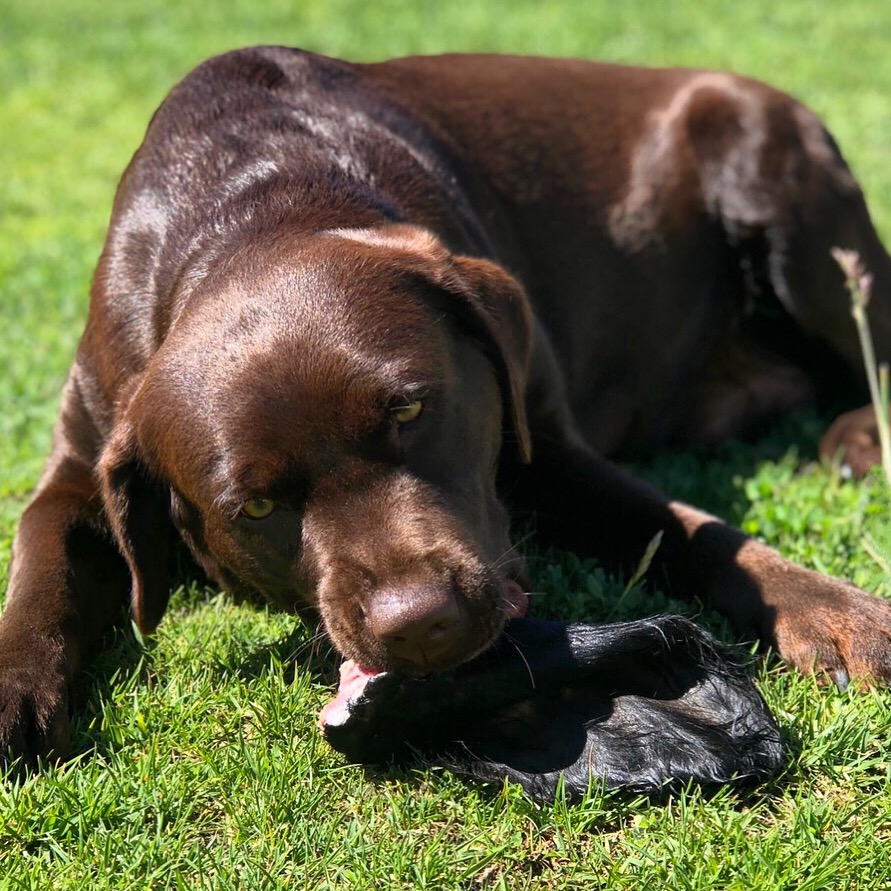Click the Arrow to Access the Table of Contents Links
This is part two in a series about feeding breeding dogs for pregnancy and lactation
The Early Weeks
 When you are feeding breeding dogs during the first four weeks of gestation, you do not increase your dam’s food during this time. You do want to ensure you’re providing a balanced diet as discussed in article one when we talked about diet improvements for pre breeding feeding; but you do not need to make any increases to her food supply until week five unless she is under weight.
When you are feeding breeding dogs during the first four weeks of gestation, you do not increase your dam’s food during this time. You do want to ensure you’re providing a balanced diet as discussed in article one when we talked about diet improvements for pre breeding feeding; but you do not need to make any increases to her food supply until week five unless she is under weight.
If you are not feeding twice a day then this is the time to increase from once per day feeding to twice per day feedings. You aren’t going to feed more; you’re going to split her day’s food in half to get her used to eating more frequently. This is generally already taken care of during the pre breeding phase when you would have made improvements to her diet in preparation of the breeding.
Critical Tip: If your female is underweight then it is important that you bring her weight up to a normal number in a healthful but speedy way. She is creating anywhere from one to upwards of sixteen+ lives with her body and she must be at a proper weight to do so.
How Many Calories Should She Eat?
Determining how many calories are needed for daily maintenance energy requirements (MER) is based on your female’s personal data and lifestyle. The breed, weight, and activity level of a dog is used to determine the energy factor (EF) number used to calculate their MER needs. This is a reason it is important to know your breed and even more importantly, to really know your individual dog.
Enter your breeding female’s recommended adult weight and her specific information on the adult dogs at maintenance calorie calculator here to find the correct amount of calories needed during these first four weeks. There is about a 30% upswing or downscale of caloric count, depending on the dog.
Nutrient Needs
The next step is to determine of those calories, how much of each required nutrient she should be eating each day. You can access the NRC nutrients calculator by ME for adult dogs here.
Energy Density & Nutrient Density
The difference between energy and nutrient density is: the energy density of food is the amount of calories a food has relative to its size or weight, while the nutrient density of food is the vitamins, minerals, fats, proteins, and carbs that calories are made up of. Making optimal use of calories ensures you are providing the right amount of energy your female needs and the nutrients she requires without having to overfeed. The energy density of the calories going into your dam should be adequate to support her in a state of maintenance during these weeks.
It is usually easiest to reach for more mainstream foods for caloric feeding purposes when feeding breeding dogs because common foodstuffs generally have laboratory tested data available for dog owners to access. While many professional formulators have access to additional nutrients data (think duck heads!), many free/public databases do not and so if you are planning meals on your own, it’s best to keep it simple.
Free Tools: You can find several verified food databases around the globe to help you with nutritional value information here: Nutrition Tools for Raw Feeding Dogs.
Increased Protein
Animal based proteins at a slightly higher % than adult dogs at maintenance are needed during gestation. Highly digestible proteins are the best to reach for.
Fat Requirements • Essential Fatty Acids (EFAs) & Pregnancy
Pregnancy negatively affects the female’s Essential Fatty Acid status (EFA) due to the changes going on in the body at a rapid rate and the litter’s demands. During later stage of gestation is is critical to supply enough DHA to the Mother for her body and for her to supply her litter with. This is because gestation has a high demand on the female’s own storage. Making sure you’re feeding her an energy dense and nutrients dense diet right from the beginning allows your dog to eat the optimal type of calories she needs without you having to increase the food yet.
Dietary fat provides more than twice the amount of metabolize energy per unit weight than protein and carbs. It’s been found that feeding a higher % of fat to protein %, with a lower % of carbohydrates provides adequate amounts of glucogenic amino acids to keep up with the needed plasma glucose levels during pregnancy and lactation. With that said, it has also been proven that pregnant dogs require dietary carbohydrates for optimal reproductive performance and survivability of pups.
Critical Info About Fatty Acids:
Fatty Acids are the main source of energy used by dogs during times of body stress such as pregnancy/whelp/lactation.
Fetal tissues are supplied with fatty acids from the mother via the placenta and then after whelp via her milk supply.
Carbohydrates • Glucose Requirement
The glucose requirement for pregnant dogs factors into the need to feed carbs at a bit higher % of the Dam’s daily calories. This does not mean to overload carbs, it means an increase that is appropriate for the Dam at hand. In the pre-breeding phase there wasn’t a need to increase carbohydrate intake but during gestation, there is. It was studied and found that the glucose turnover was 20% to 30% lower in Dams fed no Carbs. There was also a notable depression of body mass glucose (20%) compared to the Dams fed Carbs. It is important to select the right kind of carb and prepare it correctly. It is additionally important not to overly reach for unnecessary starches as an easy carb load.
Antioxidants
Pregnant females experience increased oxidative stress due to the increased oxygen consumption and changed metabolism. It is recommended to increase antioxidant foods such as vitamin E and vitamin A. Because raw diets are generally relatively high in vitamin A, there may not be a need to increase vitamin A but that would be determined based on your Dam’s specific needs.
- Dietary antioxidants (example, vitamin E) appear to have an important effect on the utilization + absorption of carotenoids. It is not fully certain whether the antioxidants contribute directly to the efficient absorption or whether they protect both carotene & vitamin A from oxidative breakdown.
- Vitamin A & E together lead to increased antioxidant capabilities, protect against some forms of cancer, and support a healthier gut.
- Vitamin A & E work synergistically to prevent obesity, metabolic syndrome, inflammation, immune response, and brain health.
The best way to increase vitamin E and ensure the source is bioavailable can be done with a natural, food grade source of vitamin E. Solgar makes a natural, non-gmo, soft gelcap that is free of gluten, wheat, dairy, yeast, sugar, and sodium. They are also free of artificial flavors, sweeteners, preservatives and colors. It can be found here: Vitamin E (100 IU) (d-Alpha Tocopherol & Mixed Tocopherols) Softgels.
Complete + Balanced Feeding
It is important to feed a complete and balanced diet to your dam in order to provide her body with the adequate nutrients she needs. To feed “complete”, you fill each of the nutrients required for dogs. To “balance,” you provide optimal amounts of each nutrient with considerations of interaction. It is important to note, small breed, large breed, and giant breed dogs will all have different needs.
You can find the recommended amounts for nutrients for your dog’s needs during the first four weeks of gestation here: Nutrient Requirements Calculator for Adult Dogs.
Conclusion
During the first four weeks of gestation you continue with the diet improvements you made prior to breeding. You are now feeding via a caloric method and paying attention to the nutrient levels that your dog optimally needs. The consideration and understanding of nutrient interactions is something that is important to know.
Sources
Applied Veterinary Clinical Nutrition, 2012 Edition by Andrea J. Fascetti and Sean J. Delaney
Canine and Feline Nutrition, A Resource for Companion Animal Professionals Third Edition 2001
Nutrient Requirements of Dogs and Cats, Animal Nutrition Series by the National Research Council (NRC) 2006
Vitamin and Mineral Interactions: The Complex Relationship of Essential Nutrients, by D. Minich
Balanced Diet Formulation for Adult Dogs, by Amy Granillo 2017
University of Illinois. Department of Animal Sciences, Reproduction Lecture by Dr. Kelly S. Swanson 2019
Canine Reproduction and Whelping: A Dog Breeder’s Guide by Myra Savant-Harris 2006
